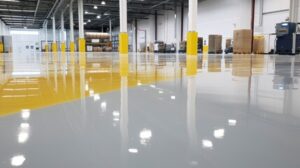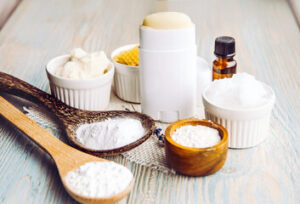While shingles and tiles are highly durable and designed to resist a lot of wear and tear, they aren’t infallible. Damage can occur from a variety of sources, such as high winds, hail, and falling debris.

Timely roof repairs can prevent structural issues, such as sagging areas, and can save you money on energy bills and home repairs in the long run. Contact Ellingson Roofing LLC for professional help.
If you have a serious roofing problem, such as a leak or missing shingles, you should act fast to prevent further damage. This is important because water seepage can cause a lot of damage, including mold growth and rotting wood, which will compromise the structural integrity of your home. In addition, it can also lead to health problems for you and your family because of exposure to mold spores.
Roof repair is an essential service that can help you avoid costly repairs and replacements. It involves identifying underlying issues such as loose or missing shingles, damaged flashing, and sagging areas. Once these issues are addressed, you can rest assured that your roof is strong and watertight, protecting your home and preventing costly damage.
The best way to prevent roof damage is to regularly check your roof for signs of wear and tear. A visual inspection can reveal a wide range of issues, such as cracks, fading or discoloration, shingle damage, and even moisture buildup. In some cases, minor problems such as these can be easily fixed by a professional. However, if you don’t take the necessary steps to address these problems, they may worsen over time, leading to costly repairs or even a roof replacement.
Whether you’re looking for small holes or cracks, you can use various materials at hand to manage the damage and keep it from spreading. For example, placing buckets or containers under leaks can catch dripping water and help contain the problem. In addition, you can try to dry out wet areas promptly using fans and dehumidifiers. However, these are only temporary solutions and won’t solve the underlying issue.
You should also conduct regular checks of your roof’s flashing, which is located around chimneys, vents, and roof windows. Often, these can become worn or cracked due to weathering or simply ageing. If you notice any issues with the flashing, you should contact a professional roofer as soon as possible to avoid expensive damage and future repair costs. A proper flashing is essential for a watertight roof and will help you save on energy costs in the long run.
Maintain the Structural Integrity of Your Home
Roof repair is one of the most important tasks homeowners can undertake to maintain the structural integrity of their homes. Damaged or faulty roofs can compromise the entire building structure, leading to leaks and mold growth. Regular inspections and prompt repairs prevent these issues from escalating into more serious problems.
Structural repairs involve extensive and complicated processes that require the expertise of a professional. These experts can perform a thorough check of your roofing system and identify any problem areas. They will then repair the underlying causes of the damage, preventing future problems. They may also recommend changes to the ventilation or insulation, which will help improve energy efficiency and reduce your home’s heating and cooling costs.
In addition to preventing leaks and other structural problems, regular roof maintenance can protect your family’s health. Mold and mildew spores often find their way into walls and ceilings through damaged roofing materials, causing widespread damage and creating a hazardous living environment. Timely roof repair can eliminate these harmful microorganisms and restore a healthy, clean indoor environment for your family.
A well-maintained roof can significantly increase the value of your property, making it more attractive to potential buyers. In contrast, a deteriorated roof can detract from the overall curb appeal of your home and lower its market value. Therefore, it is critical to invest in roof repair as soon as you notice any signs of damage.
When you need to make an insurance claim, a well-maintained roof can also help speed up the process and reduce any associated fees or fines. An unrepaired roof can result in delays and other problems, such as leaks or structural damage, which can affect the validity of your claim. In such cases, insurers will likely ask for proof of regular maintenance to ensure that your roof has been properly maintained and repaired.
Keeping your roof in good condition is essential to the longevity of your home. Regular roof repairs can prevent the build-up of moss and other debris, and it can also save you money on energy bills. If you spot any signs of damage, such as shingle loosening or cracks in the roof surface, it is essential to contact a roofing contractor for repair services immediately.
Enhance Energy Efficiency
A well-maintained roof is a key element of an energy efficient home. By enhancing insulation, minimizing air leaks and preventing heat loss and gain, and promoting sustainable practices, roof repair contributes to lower utility costs, improved indoor comfort, and reduced environmental impact.
Leaky roofs allow conditioned air to escape and outside air to infiltrate the living space, forcing heating or cooling systems to work harder to maintain desired temperatures. Proper roof repairs and a comprehensive roofing inspection can help seal these leaks and prevent further damage, saving homeowners money on costly energy bills.
In addition to reducing energy consumption, a well-maintained roof can help reduce HVAC system wear and tear and extend the lifespan of equipment. This can translate to significant cost savings over the long term.
Moreover, homeowners can incorporate eco-friendly materials and reflective coatings during roof repairs to further enhance their home’s energy efficiency. These green options reflect sunlight to decrease the amount of heat absorbed by the roof, and they also help to promote renewable energy use in the home.
Energy efficient homes are more comfortable and affordable, while helping to protect the environment. Aside from preventing leaks and structural damage, regular roof repair services can help ensure that your home’s insulation is in good condition. This will help reduce your energy bills and improve overall home efficiency.
A common cause of high energy bills is a poorly-insulated or leaky roof. By addressing these issues, you can improve your home’s energy efficiency and reduce your utility bills.
An efficient, well-insulated roof can reduce your energy costs and carbon footprint. In addition to reducing the need for excessive heating and cooling, it can reduce air pollution by keeping unwanted pollutants out of your home.
Roof repairs can help ensure that your home’s insulation and ventilation are in good condition. A well-insulated roof can prevent heat from escaping during the winter and cold air from entering during the summer, allowing you to regulate your home’s temperature more effectively and save on energy bills. In addition, proper roof ventilation can help to keep moisture and humidity levels in check and prevent mold and mildew.
Increase Home Value
Whether or not you plan to sell your home in the near future, it’s important to keep up with roof repairs to maintain or increase your property value. Potential buyers or appraisers will take notice of a well-maintained and structurally sound roof, increasing your home’s marketability and potentially leading to a faster sale at a higher offer price. If your roof needs to be replaced, choosing a quality roofing material like impact-resistant shingles can also help you save money on insurance rates in the future.








